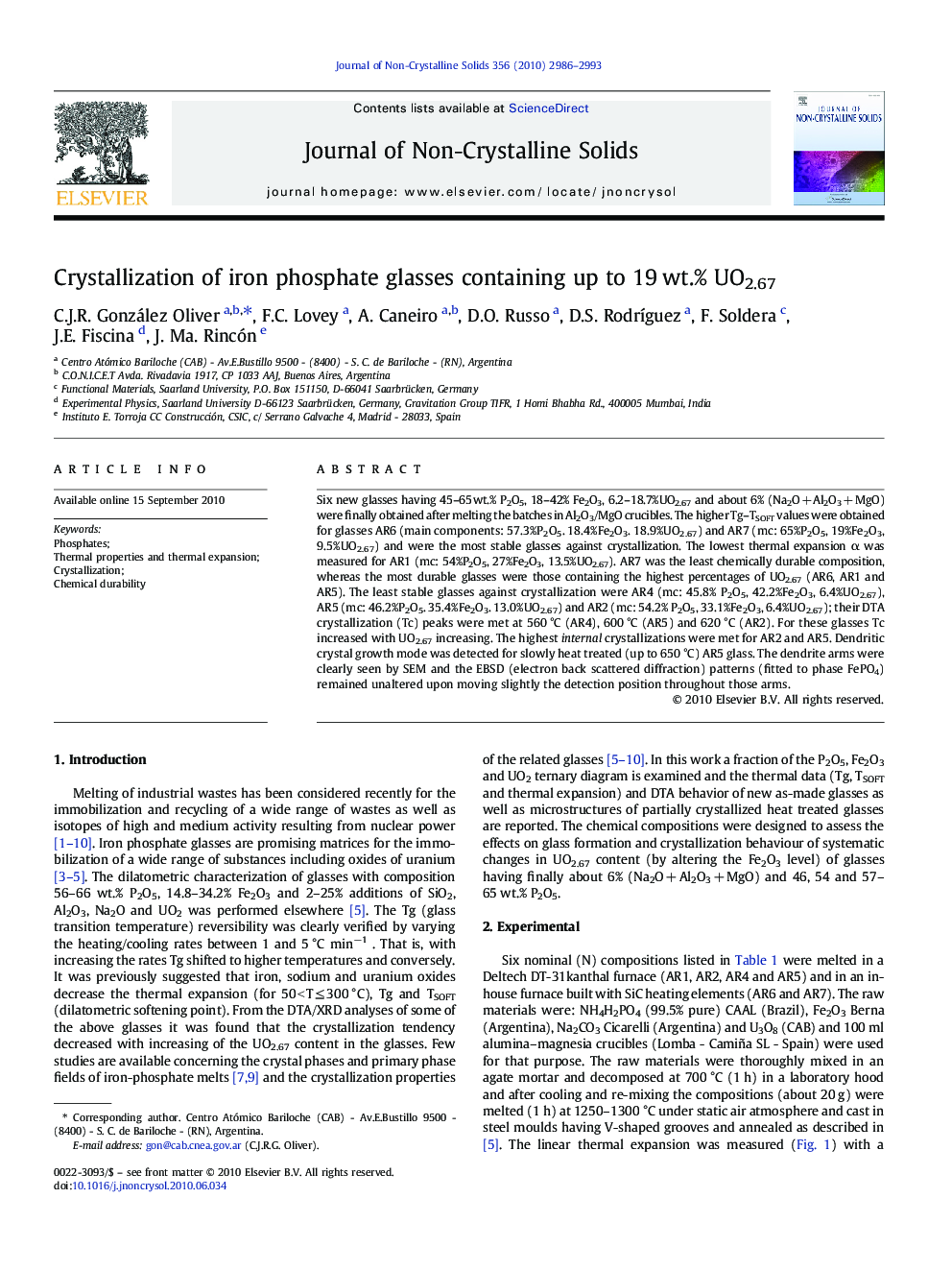| Article ID | Journal | Published Year | Pages | File Type |
|---|---|---|---|---|
| 1482621 | Journal of Non-Crystalline Solids | 2010 | 8 Pages |
Abstract
Six new glasses having 45-65 wt.% P2O5, 18-42% Fe2O3, 6.2-18.7%UO2.67 and about 6% (Na2O + Al2O3 + MgO) were finally obtained after melting the batches in Al2O3/MgO crucibles. The higher Tg-TSOFT values were obtained for glasses AR6 (main components: 57.3%P2O5. 18.4%Fe2O3. 18.9%UO2.67) and AR7 (mc: 65%P2O5, 19%Fe2O3, 9.5%UO2.67) and were the most stable glasses against crystallization. The lowest thermal expansion α was measured for AR1 (mc: 54%P2O5, 27%Fe2O3, 13.5%UO2.67). AR7 was the least chemically durable composition, whereas the most durable glasses were those containing the highest percentages of UO2.67 (AR6, AR1 and AR5). The least stable glasses against crystallization were AR4 (mc: 45.8% P2O5, 42.2%Fe2O3, 6.4%UO2.67), AR5 (mc: 46.2%P2O5. 35.4%Fe2O3. 13.0%UO2.67) and AR2 (mc: 54.2% P2O5, 33.1%Fe2O3, 6.4%UO2.67); their DTA crystallization (Tc) peaks were met at 560 °C (AR4), 600 °C (AR5) and 620 °C (AR2). For these glasses Tc increased with UO2.67 increasing. The highest internal crystallizations were met for AR2 and AR5. Dendritic crystal growth mode was detected for slowly heat treated (up to 650 °C) AR5 glass. The dendrite arms were clearly seen by SEM and the EBSD (electron back scattered diffraction) patterns (fitted to phase FePO4) remained unaltered upon moving slightly the detection position throughout those arms.
Related Topics
Physical Sciences and Engineering
Materials Science
Ceramics and Composites
Authors
C.J.R. González Oliver, F.C. Lovey, A. Caneiro, D.O. Russo, D.S. RodrÃguez, F. Soldera, J.E. Fiscina, J. Ma. Rincón,
